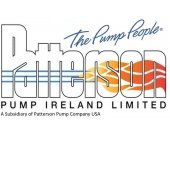Improve flood defence systems with Variable Speed Drives
 From New Orleans to the Netherlands, the world is full of places threatened by flood. And the age-old weapon in the fight – the water pump – continues to get more efficient thanks to the use of variable speed motors and the drives that control them, as drive specialist Control Techniques explains.
From New Orleans to the Netherlands, the world is full of places threatened by flood. And the age-old weapon in the fight – the water pump – continues to get more efficient thanks to the use of variable speed motors and the drives that control them, as drive specialist Control Techniques explains.
The World Health Organization estimates that, between 1998 and 2017, floods affected the lives of over two billion people worldwide. Besides the immediate danger to human life, flooding can devastate agricultural land (frequently located in floodplain territory) and wreak havoc on the structural and infrastructural assets of built-up areas.
And with increasingly intense downpours and rising sea levels, both observed consequences of climate change, severe flooding is expected to become more common in at least the short and medium terms.
Efficient floodwater pumping systems
Floodwater is, by definition, unpredictable. If its arrival – on a potentially overwhelming scale – follows an extended dry period, pumps that have stood for some time at a standstill need to be activated instantly, powerfully and efficiently to start transferring large volumes of water (the world’s largest pumping station, outside New Orleans, can move 150,000 gallons of floodwater per second) at continuously fluctuating flow rates.
Different strengths of response to a flood event are achieved in the first instance by varying the number of pumps in action. Multiple pumps are a must in flood defence systems (even in the smallest designs, a duty pump must have a backup). Distributing work over a greater number of smaller pumps rather than fewer larger ones is the first step towards a safer and more controllable system. Plus, the smaller the pump, the less vulnerable it is to stress from problems with floating debris, vortices and trapped air. After this, variable speed motors are a prerequisite if pumps are to engage with the distinctive dynamics of floodwater behaviour with optimum efficiency.
The direct starting (or stopping) of a floodwater pump is likely to cause water hammer following the abrupt change in flow rate through the pipe. These hydraulic shocks shorten the lifespan of equipment and lead to leaks at joints and burst pipes. Using soft starters or variable frequency drives (VFDs) ensures a gentle acceleration of the pump’s rotation up to rated speed, with VFDs offering the added advantage of fully regulated motor speed after that.
Though desirable in principle, effecting an efficient speed regulation of floodwater pump motors can be a complex affair. For example, while it makes sense from an energy-consumption point of view for a variable speed motor to run no faster than is strictly called for, pumps and pipes that deal with large volumes of floodwater may, depending on the system’s design, be more or less vulnerable to a build-up of sediment. Systems, where this is a problem, may find that by running at a consistently high speed, sediment build-up is kept to a minimum – as, then, is the corresponding mechanical stress on the motors.
It is important, too, that pumps don’t overdo it. For example, in an area like the Fens around the Great Ouse River, water levels have to be managed to allow for navigation. A balancing act needs to be struck between neither underdraining nor overdraining.
The challenge
The flood defence system designer must, therefore, carefully work out target water levels in the environment to be protected. These are the collection points for the data that the drives will use to determine motor speed: the higher the water rises above a target level, the faster the pump will work, while the lower the water falls, the more the pump will slow down.
Beyond this, the more programmable the system, the more opportunities exist for different kinds of efficiency. Whether through PLC or integrated proportional-integral-derivative (PID) technology, pre-set values can be made to change with the calendar so that seasonal variations in water level can be taken into account. And, complementing real-time operations, supervisory control and data acquisition systems (SCADA) may be used to supply information about incoming weather developments.
Advantages of centrifugal pumps
Centrifugal pumps are favoured in flood defence systems because of their power, simplicity and relatively small size. Thus, thanks to the centrifugal pump and fan affinity laws, there are significant energy savings to be made following motor speed reduction (motor speed cut by 25%, equating to energy consumption decreased by nearly 60%, and so on).
This is important when considering the generally high running costs of a pumping station, some of which still favour diesel engines for economic reasons (though such systems must settle for efficiency levels around only the 20-40% mark).
And so, when it comes to building new (or refitting old) floodwater pumping stations, variable speed electrical systems are generally now also favoured. Besides the standout dividends of controllability, efficiency and economy, they are also comparatively quiet, which is an important design consideration for systems in more populated environments (and hence, some systems prefer liquid cooling over air cooling of the motors and drives).
As the future demands the marrying of more complex automation with increasingly accessible interfaces, the objective must be for ever more efficient systems. In the context of flood defence, this means ever safer environments.
The Pump Drive F600 from Control Techniques brings reliability to water control management and the most efficient use of energy. Offering the same dedicated pump features and capabilities as the standard models, the F600 has been upgraded to enable customers to use both standard and high IP drives for the same project. Mixing and matching vendors or product feature sets is no longer a headache, making project qualification straightforward.
Back to Latest News

1.png&w=170&h=170)
2.jpg&w=170&h=170)









3.png&w=170&h=170)